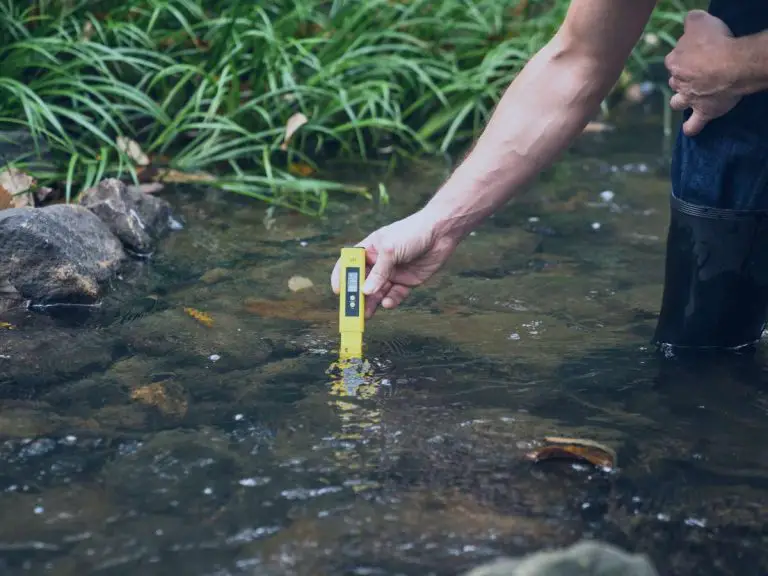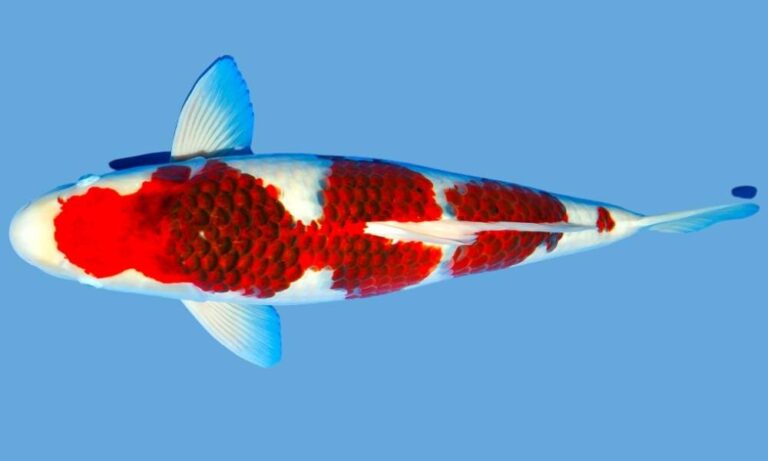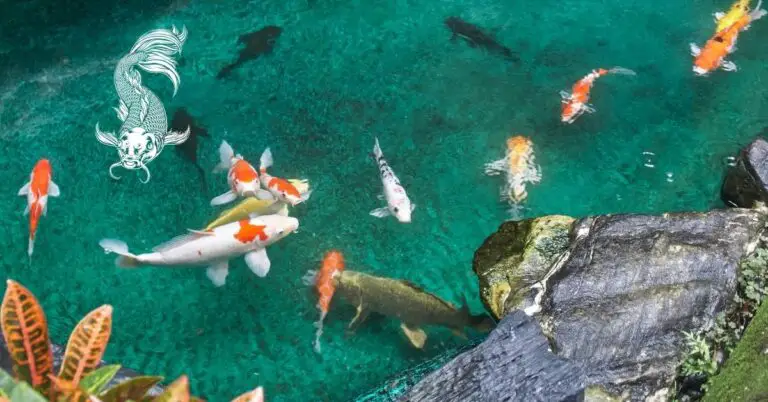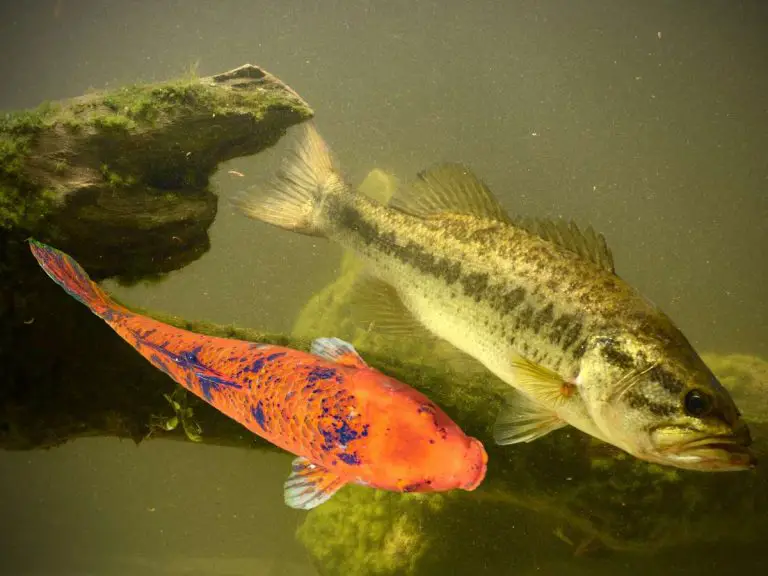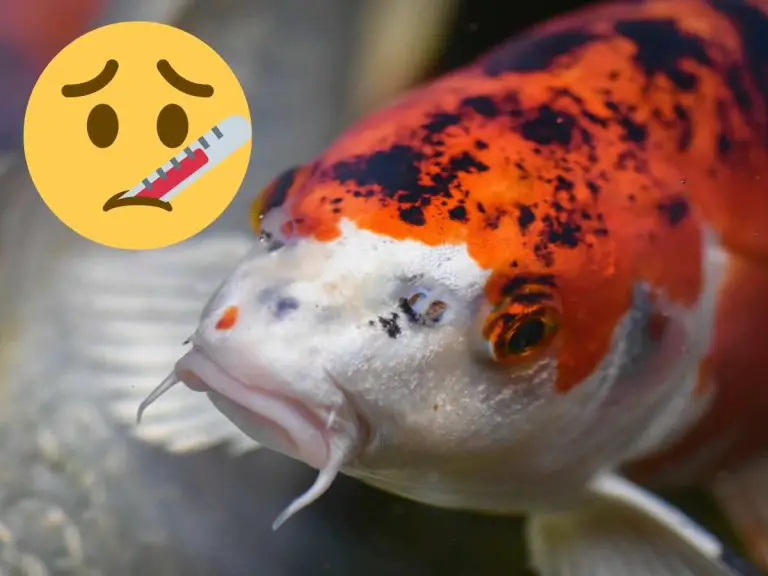Koi Cloudy Eye Treatment: Complete Guide To Treat & Prevent Cloudy Eye And Keep Your Fish Healthy
Do your koi have cloudy eyes? Revered for their beauty and grace, koi are a staple in ornamental backyard ponds. But like all animals, they are susceptible to health issues, one of which is the perplexing condition of cloudy eyes.
Keep reading to understand the causes, symptoms, and treatments of cloudy eyes in koi fish. From nutritional imbalances and trauma to the broader implications of this condition, we explore the intricate details of koi fish eye care. We’ll also touch upon home remedies, expert advice, and preventive measures to ensure the well-being of these aquatic beauties.
Whether you’re a seasoned koi keeper or a newbie, this comprehensive guide promises insights that will equip you to better care for your finned friends. Let’s explore how to keep koi eyes clear and vibrant!
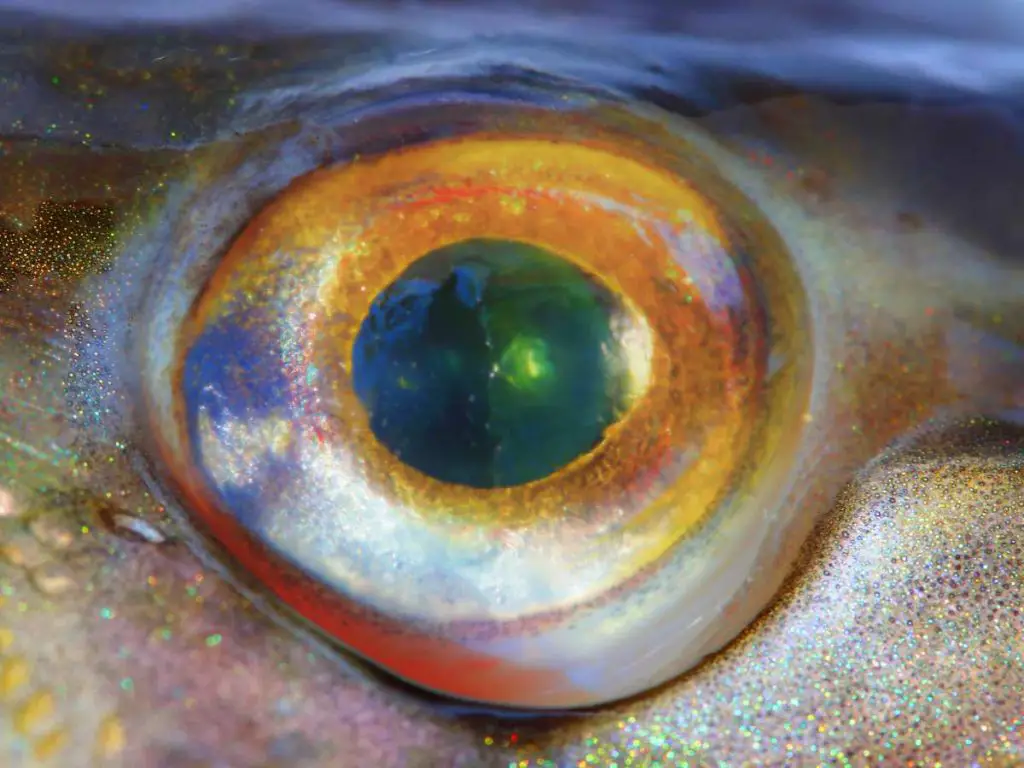
Why are my fish’s eyes cloudy? Understanding the causes of cloudy eyes in koi fish
Cloudy eyes in koi fish can be a concerning issue for pond owners. Understanding what causes this condition is crucial for effectively treating it and preventing it from happening again in the future.
| Causes of Cloudy Eyes | Solutions |
|---|---|
| Bacterial infections | Medication, water treatments |
| Fungal infections | Medication, water treatments |
| Poor water quality | Filtration improvements, regular water testing |
| Nutritional imbalances | Proper feeding, balanced nutrition |
| Physical trauma | Wound care, isolation |
Bacterial and fungal infections
One of the common causes of cloudy eyes in koi fish is bacterial or fungal infections. These microorganisms can enter the fish’s eyes through wounds or abrasions, leading to inflammation and cloudiness. It’s important to take swift action if you suspect an infection, as it can quickly spread and cause further damage.
If left untreated, such infections can progress and potentially lead to blindness or systemic infections.
Poor water quality and stress
Another factor that can contribute to cloudy eyes in koi fish is poor water quality. When the water parameters, such as pH and ammonia levels, are not properly maintained, it can cause stress to the fish. As a result, their immune system becomes weakened, making them more susceptible to eye infections and cloudiness.
Chronic exposure to poor water conditions can also have long-term health implications for koi.
Nutritional imbalances
Koi fish, like any living beings, require a balanced diet to stay healthy. When they are not getting the necessary nutrients, their overall health can suffer, and their eyes may become cloudy. Ensuring that your koi fish are getting a nutritionally balanced diet is essential in preventing eye issues.
Trauma or injury
Accidents happen, even in a pond environment. Koi fish can sometimes injure their eyes due to collisions with objects or aggressive behavior from other fish. Trauma or injury to the eyes can result in cloudiness. Providing a safe and well-maintained pond environment can greatly reduce the risk of such injuries.
And remember, while such injuries might heal on their own, but they can also become infected.
Is koi cloudy eye serious?
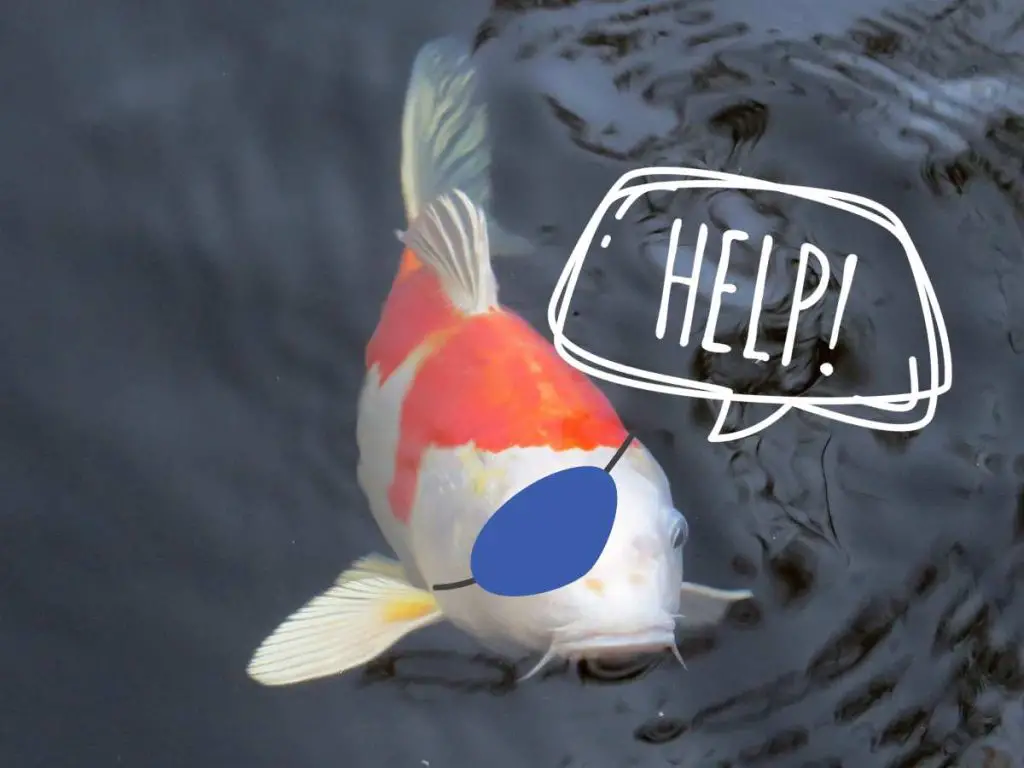
Cloudy eye, characterized by a milky or cloudy appearance of one or both eyes, is a symptom rather than a disease in itself. Its seriousness largely depends on its underlying cause.
While a single instance of cloudy eye might not be immediately life-threatening, it should never be ignored. It can be indicative of underlying problems that, if left unaddressed, can escalate in severity. Regular observation of koi and prompt attention to any signs of illness, including cloudy eyes, is crucial for ensuring their long-term health and well-being.
If the cause of the cloudy eye is uncertain, if initial treatments don’t yield results, or you’re dealing with any other type of fish eye disorder consulting with a fish health specialist or veterinarian is essential.
Implications of cloudy eye in koi
Vision Impairment: Severe or prolonged cloudiness can impair a fish’s vision, affecting its ability to find food or navigate its environment.
Indicator of Underlying Issues: Cloudy eye can be a sign of broader issues in the pond, such as poor water quality or the presence of pathogens. Addressing the root cause is crucial for the overall health of all pond inhabitants.
Symptoms of Cloudy Eye in Koi
It’s essential to recognize the symptoms of cloudy eye early to address the underlying cause and ensure the well-being of your fish. Here are the primary symptoms and associated signs:
Clouded Appearance: The most evident symptom is a whitish or milky haze over the eye. This cloudiness can cover the entire eye or just a portion of it.
Swelling or Bulging: In some cases, the affected eye may appear swollen or protrude more than usual, a condition often referred to as “pop-eye.”
Redness or Inflammation: The area around the eye, or the eye itself, might appear reddened or inflamed.
Excess Mucus or Discharge:Some fish may exhibit a noticeable mucus or discharge around the affected eye.
Behavioral Changes: Affected koi might display changes in behavior, such as:
- Rubbing or Scratching: The fish may rub its eye against objects in the pond, indicating discomfort or irritation.
- Reduced Activity: Koi with cloudy eye might become less active or lethargic.
- Difficulty Feeding: Impaired vision can make it challenging for the fish to locate and consume food.
- Isolation: Affected fish might separate themselves from the rest of the group.
Other Physical Signs: In cases where cloudy eye is a symptom of a broader health issue, koi might exhibit other physical signs such as:
- Skin lesions or ulcers
- Discoloration or pale gills
- Rapid or labored breathing
Remember: Recognizing the symptoms of cloudy eye in koi is the first step in addressing the issue. Regular observation and prompt attention to any changes in appearance or behavior are crucial. If any of these symptoms are observed, you should consult with a fish health specialist or veterinarian to determine the underlying cause and appropriate treatment.
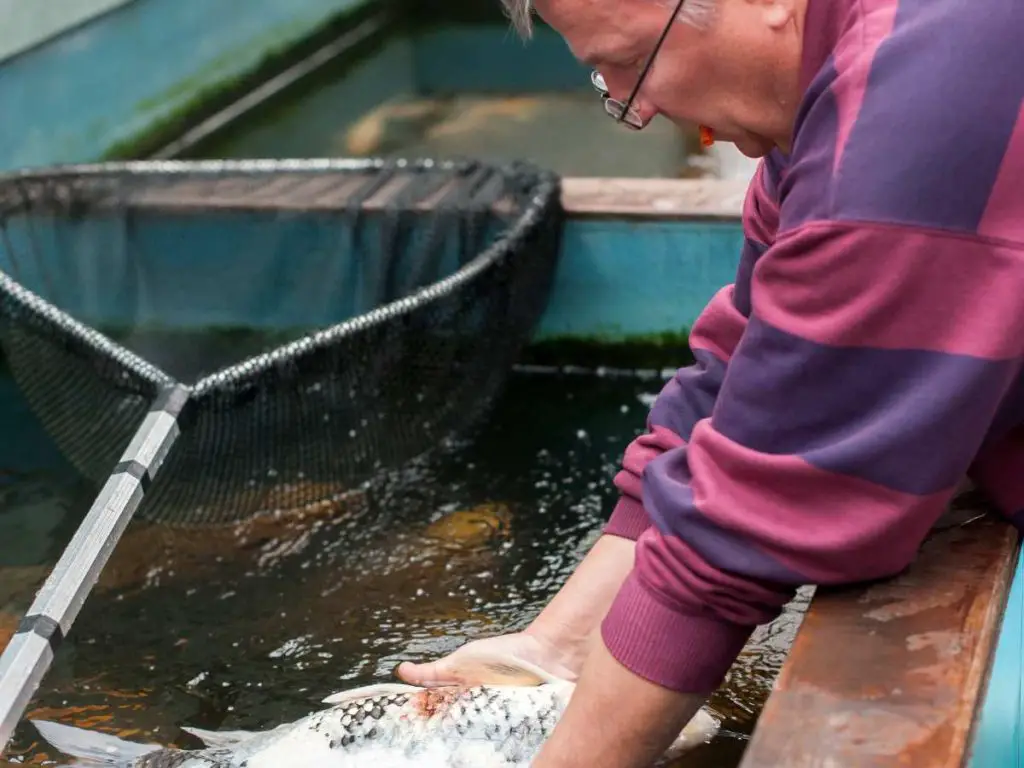
Diagnosing cloudy eyes in koi fish
Diagnosing the cause of cloudy eyes in your koi fish is crucial in order to determine the most effective treatment. There are several methods you can use to diagnose this condition and ensure the best care for your fish.
Visual examination
The first step in diagnosing cloudy eyes is to visually examine your koi fish. Look closely at their eyes and check for any abnormalities such as cloudiness, redness, or swelling. Take note of any other symptoms or changes in behavior that may be present. This visual examination can give you important clues about the underlying cause of the cloudy eyes.
Water testing for quality parameters
Poor water quality is often a contributing factor to cloudy eyes in koi fish. It’s important to test the water parameters regularly to ensure they are within the appropriate range. Check the levels of ammonia, nitrites, nitrates, pH, and oxygen. High levels of ammonia or nitrites can indicate poor water conditions, which might be causing irritation and cloudiness in your fish’s eyes.
Consulting with a veterinarian or fish health specialist
When in doubt, it’s always a good idea to seek professional advice. A veterinarian or fish health specialist can provide a more accurate diagnosis and recommend the most suitable treatment for your koi fish. They have the knowledge and experience to identify the underlying cause of the cloudy eyes and provide appropriate solutions.
In short, consulting with an expert can save you time, money, and most importantly, ensure the well-being of your beloved fish.
How do you treat cloudy eyes in koi?
When it comes to treating cloudy eyes in your beloved koi fish, there are a few options you can explore. The first step is to identify the underlying cause of the cloudiness, which could be a bacterial or fungal infection, poor water quality, nutritional imbalances, or even trauma or injury. To do this, you should consult with a vet or fish health specialist
Once you have pinpointed the cause, you can proceed with the appropriate treatment plan.
Medications for infections
If the cloudy eyes are a result of bacterial or fungal infections, the first course of action is to use antibiotics or antifungal medications. These can be added directly to the pond water or administered as injections, depending on the severity of the infection and the advice of a veterinarian or fish health specialist.
It is important to follow the dosage instructions carefully and complete the full course of treatment for optimal results.
Water treatments and filtration improvements
In cases where poor water quality is the culprit behind the cloudy eyes, it is crucial to address the root cause by improving the pond water conditions. Regular water testing is essential to monitor parameters such as ammonia, nitrate, and pH levels.
By using appropriate water treatments and making necessary filtration improvements, you can create a clean and healthy environment for your koi fish. This not only aids in the treatment of cloudy eyes but also prevents future occurrences.
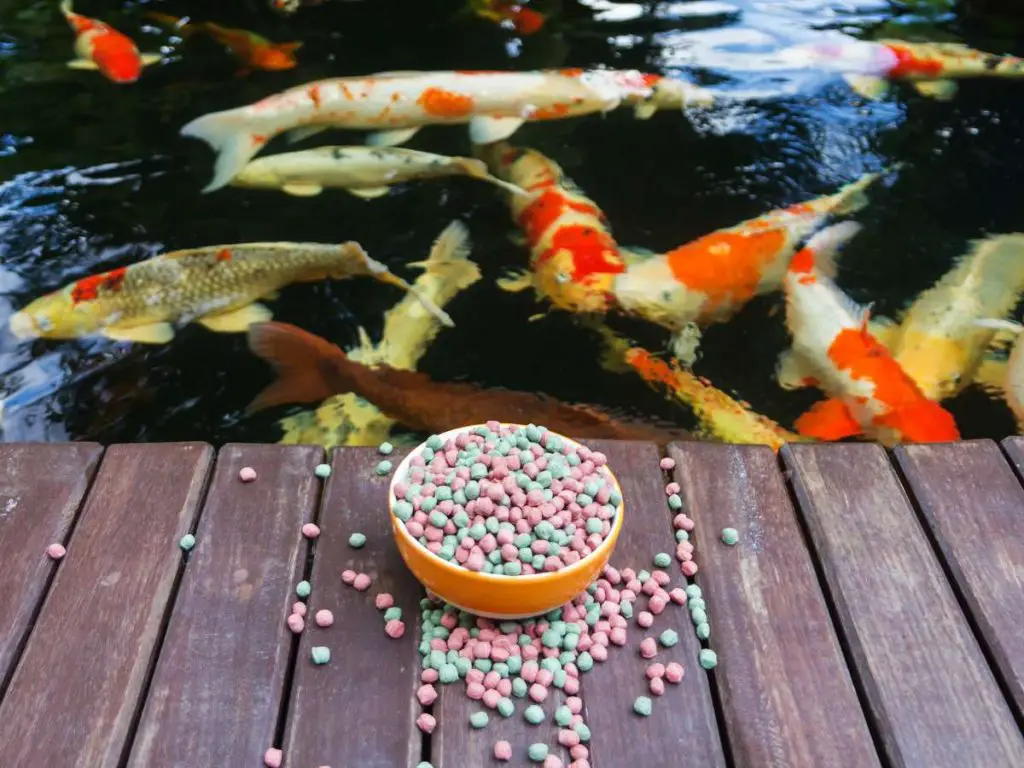
Nutritional supplements and balanced diet
Nutritional imbalances can contribute to various health issues in koi fish, including cloudy eyes. To address this, it is important to provide a balanced diet that meets the nutritional needs of your fish. You can opt for commercial koi fish food that contains essential vitamins and minerals.
Additionally, you may consider adding nutritional supplements such as spirulina or vitamin C to their diet to support overall eye health.
If your koi fish has experienced trauma or injury, it is crucial to provide proper wound care to facilitate healing and prevent infection. This may involve cleaning the wound gently with a mild antiseptic solution and applying an appropriate fish-safe wound dressing.
Consulting with a veterinarian or fish health specialist can help you determine the best course of action for treating and caring for trauma-related cloudy eyes.
Does Melafix treat cloudy eye?
API® MELAFIX is an all-natural antibacterial treatment designed to address various bacterial infections in fish. According to their own product details, they say it is effective in treating a range of bacterial infections, including open wounds, abrasions, tail rot, eye cloud (cloudy eye), and mouth fungus. Additionally, MELAFIX promotes the regrowth of damaged fins and tissue.
I’ve read different forums to get a feel for how effective MELAFIX actually is, and many users have found success using it to treat cloudy eye and other infections. That said, it’s essential to note that individual experiences may vary, and it’s always recommended to consult with a fish health professional for specific cases.
Utlimately, MELAFIX is marketed as a remedy for cloudy eye among other bacterial infections. However, as with any treatment, it’s crucial to monitor the fish’s condition and seek expert advice if needed.
Home remedies for cloudy eyes in koi fish
When it comes to cloudy eyes in koi fish, there are some home remedies that can be effective in treating the condition. These remedies, while not a substitute for medical treatment, can help improve the health and well-being of your beloved koi fish. Here are a few home remedies you can try:
Salt baths
A salt bath is a simple and natural remedy that may help to improve the condition of the koi fish’s eyes. It can help with osmoregulation and might have some antiparasitic properties.
Dissolve aquarium salt in a separate container of pond water and then gently transfer the fish into the salt bath. Leave them in for a few minutes, ensuring they can swim comfortably, before returning them to the main pond. This process can be repeated regularly, but be sure to follow the recommended dosage for salt and consult with a professional if you have any concerns.
Garlic
Garlic is believed to have antiparasitic and antibacterial properties. Some fish keepers use garlic as a preventive measure or as a supplement to boost the immune system of fish. It’s often used as an appetite stimulant for fish that are reluctant to eat.
That said, there’s limited evidence to suggest that garlic can directly treat cloudy eyes in koi. However, if the cloudy eyes are due to a parasitic infection, garlic might help to some extent. But it shouldn’t be the primary treatment method.
Typically, garlic is introduced into the fish’s diet either by soaking the fish food in garlic extract or using commercial fish food that contains garlic. You could also crush a small clove of garlic and mix it with the koi fish’s food, ensuring they consume it.
While garlic can be part of a holistic approach to fish care, it should not replace proper medical treatments, especially for specific conditions like cloudy eyes. It’s essential to diagnose the exact cause of cloudy eyes (bacterial, fungal, parasitic, injury, or water quality issues) to determine the appropriate treatment.
Proper diagnosis and treatment are essential for the best outcomes.
Herbal treatments and homeopathic remedies
While there are some herbal treatments and homeopathic remedies that hobbyists have tried for various fish ailments, it’s essential to approach these with caution. The efficacy of these treatments, especially for specific conditions like cloudy eyes in koi, is not well-established in scientific literature. Here are some that have been mentioned in fish-keeping circles:
- Tea Tree Oil:
- Found in products like Melafix, it’s believed to help with minor bacterial infections and promote healing of wounds.
- However, its effectiveness specifically for cloudy eyes is not well-documented.
- Aloe Vera:
- Some believe it can help soothe fish and promote healing, but direct evidence for treating cloudy eyes is lacking.
- Echinacea:
- Sometimes used as an immune booster in fish. A stronger immune system might help fish fend off infections that could lead to cloudy eyes.
- Goldenseal:
- This herb is sometimes mentioned for its potential antibacterial properties.
- Pau D’Arco:
- Believed by some to have antifungal properties.
Important considerations for at-home cloudy eye treatments
While home remedies might offer some benefits in fish care, they are not proven primary treatments for cloud eyes in koi.
Before attempting any treatment, it’s crucial to diagnose the cause of the cloudy eyes. Cloudy eyes can result from bacterial infections, fungal infections, parasitic infections, injury, or poor water quality. The treatment approach should be based on the underlying cause.
Always consult with a veterinarian or fish health specialist before trying any treatments, herbal or otherwise. They can provide guidance on the best course of action and potential risks.
If considering an herbal or homeopathic remedy, research thoroughly. Understand potential side effects and interactions. Ensure that any product or substance added to the pond is safe for all its inhabitants.
Herbal and homeopathic remedies should not replace primary treatments, especially if the cause of the cloudy eyes is known and a proven treatment is available.
Ultimately, while there are herbal and homeopathic remedies that some fish keepers have tried, their effectiveness for treating cloudy eyes in koi is not well-established. It’s essential to prioritize the well-being of the fish and rely on proven treatments when available.
Preventing cloudy eyes in koi fish
A healthy and vibrant pond starts with ensuring the well-being of your beloved koi fish. By following a few simple practices, you can greatly reduce the risk of cloudy eyes and other common issues. Let’s dive into some best practices for preventing cloudy eyes in koi fish:
Maintain a clean and well-filtered pond
Cleanliness is key when it comes to koi fish eye care. Regularly remove debris, such as fallen leaves and excess fish food, from the pond. This helps prevent the buildup of harmful bacteria and contaminants that can cause infections and other health issues.
Investing in a reliable filtration system is a wise decision. It helps to remove toxins and impurities, keeping the water clean and clear. Consider a combination of mechanical, biological, and UV filters to ensure optimal pond health.
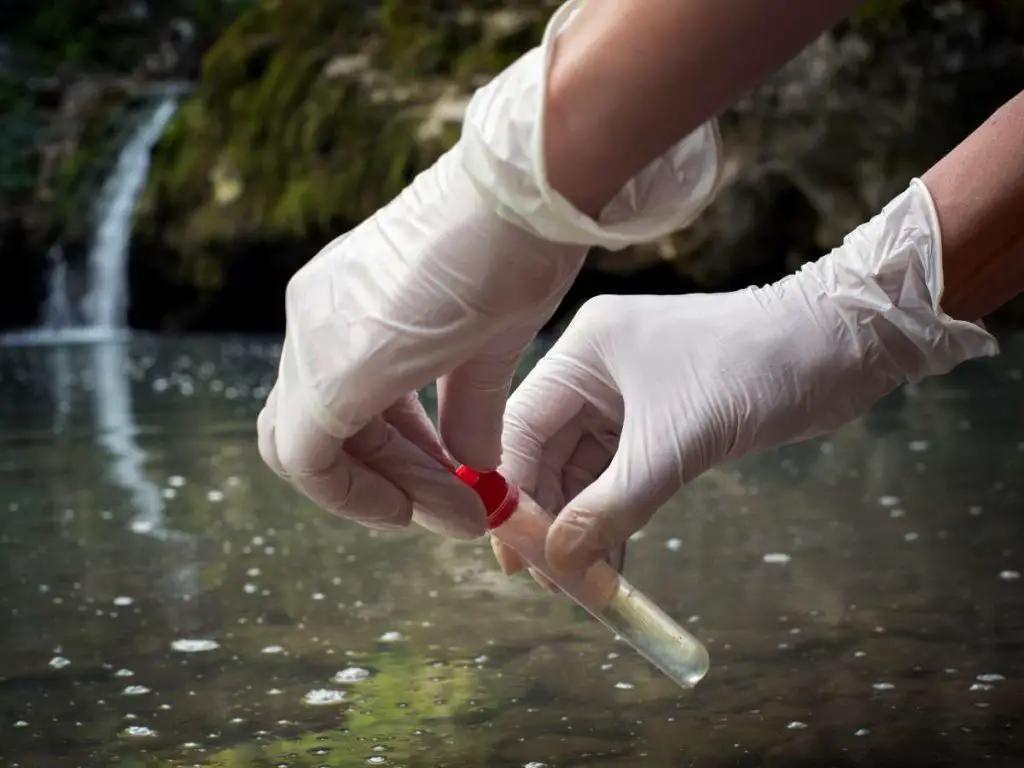
Regular water testing and maintenance
Monitoring water quality is crucial in preventing cloudy eyes in koi fish. Test the water regularly for parameters such as ammonia, nitrite, nitrate, pH, and dissolved oxygen levels. A simple test kit can easily provide these measurements.
Maintain proper water chemistry by adjusting pH levels and addressing any imbalances. A stable and well-maintained pond environment helps to strengthen your fish’s immune system, reducing their susceptibility to infections and diseases.
Proper feeding and balanced diet
Feeding your koi fish a balanced and nutritious diet is essential for their overall health, including their eyes. Opt for high-quality fish food that contains essential vitamins, minerals, and protein. You may also want to consider homemade koi food).
Avoid overfeeding, as it can lead to an accumulation of excess waste in the pond and poor water quality. Monitor your fish’s feeding habits and adjust the amount accordingly.
| Recommended Feeding Practices: |
|---|
| – Feed your koi fish small and frequent meals instead of a single large feeding |
| – Consider a variety of food types to provide a balanced diet |
| – Remove uneaten food after a few minutes to prevent water pollution |
Quarantine new fish to prevent infection spread
Introducing new fish to your pond can be exciting, but it also carries potential risks. Quarantining new fish before introducing them to your main pond is a crucial step in preventing the spread of infections.
Set up a separate quarantine tank and ensure that new fish are healthy and free from any signs of illness. Monitor them closely for a few weeks before introducing them to the rest of your koi fish. It’s better to be safe than sorry!
Best practices for koi fish eye care
Ensuring the health and well-being of your koi fish goes beyond just feeding and maintaining their pond. Proper koi fish eye care is essential for their overall health and happiness. Here are some best practices to keep in mind:
Observing fish behavior and appearance
Take time to closely observe your koi fish on a regular basis. Look out for any changes in their behavior or appearance, especially regarding their eyes. Cloudiness, redness, swelling, or abnormal discharge can indicate a potential eye problem. Promptly identifying and addressing such issues can prevent them from worsening.
Regular monitoring and maintenance
In addition to observation, regular monitoring and maintenance are crucial. This includes testing your pond water regularly to ensure optimum conditions for your koi fish. Proper filtration, water quality, and temperature are key factors in keeping your fish’s eyes healthy. Implement a routine maintenance schedule to prevent water issues that can lead to cloudy eyes.
Consulting with experts for advice
Don’t hesitate to consult with experts in koi fish care, such as veterinarians or experienced fish health specialists. They can provide valuable insights and guidance in addressing any eye-related concerns. Whether it’s diagnosing an issue or recommending appropriate treatments, their expertise can make a significant difference in your koi fish’s eye health.
If you notice any eye-related problems, seek professional advice to determine the best course of action. Remember, early intervention can prevent more serious complications down the line.
| Best Practices | Description |
|---|---|
| Observing fish behavior and appearance | Look for changes in behavior or appearance, especially in the eyes. |
| Regular monitoring and maintenance | Test pond water regularly, ensure proper filtration, and maintain water quality. |
| Consulting with experts | Seek advice from veterinarians or fish health specialists for any eye-related concerns. |
| Early intervention | Address eye-related problems promptly to prevent complications. |
| Home remedies | Consider salt baths, natural antiseptics, and herbal treatments. |
| Prevention | Maintain a clean pond, quarantine new fish, and ensure proper feeding. |
Final Thoughts: Does cloudy eye in fish go away?
Cloudy eye in fish can go away with proper treatment and care. The condition is often caused by bacterial or fungal infections, poor water quality, or physical trauma. Addressing the underlying cause and providing appropriate treatment can lead to recovery. However, early detection and intervention are crucial for the best outcomes.
Key Takeaways
- Cloudy eyes in koi fish can be caused by bacterial and fungal infections, poor water quality, nutritional imbalances, and trauma.
- Diagnosing cloudy eyes involves visual examination, water testing, and consulting with fish health specialists.
- Treatment options include medication for infections, water treatments and filtration improvements, balanced nutrition, and wound care for trauma-related cases.
- Home remedies like salt baths, natural antiseptics, and herbal treatments can also be effective.
- Preventing cloudy eyes involves maintaining a clean pond, regular water testing and maintenance, proper feeding, and quarantining new fish.
- Best practices for koi fish eye care include observing fish behavior and appearance, regular monitoring, and seeking advice from experts.
Armed with this knowledge, you can take the necessary steps to keep your koi fish happy and healthy. Remember, a healthy pond starts with healthy fish, and by addressing cloudy eyes promptly, you can ensure the well-being of your beloved koi.
Related Questions
Can cloudy eyes in koi fish be a sign of a serious health issue?
Cloudy eyes in koi fish can indicate a variety of health problems, ranging from minor infections to more serious diseases. It is important to monitor your fish closely and consult with a veterinarian or fish health specialist if the cloudy eyes persist or worsen. Early detection and proper treatment can help prevent further complications.
Are there any environmental factors that can contribute to cloudy eyes in koi fish?
Yes, poor water quality and stress can contribute to the development of cloudy eyes in koi fish. Factors such as high ammonia or nitrate levels, low oxygen levels, overcrowding, and temperature fluctuations can weaken the fish’s immune system, making them more susceptible to infections and other health issues. Maintaining a clean and well-regulated pond environment is essential to prevent cloudy eyes and promote overall fish health.


